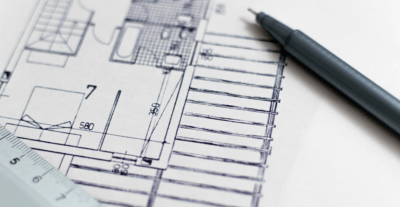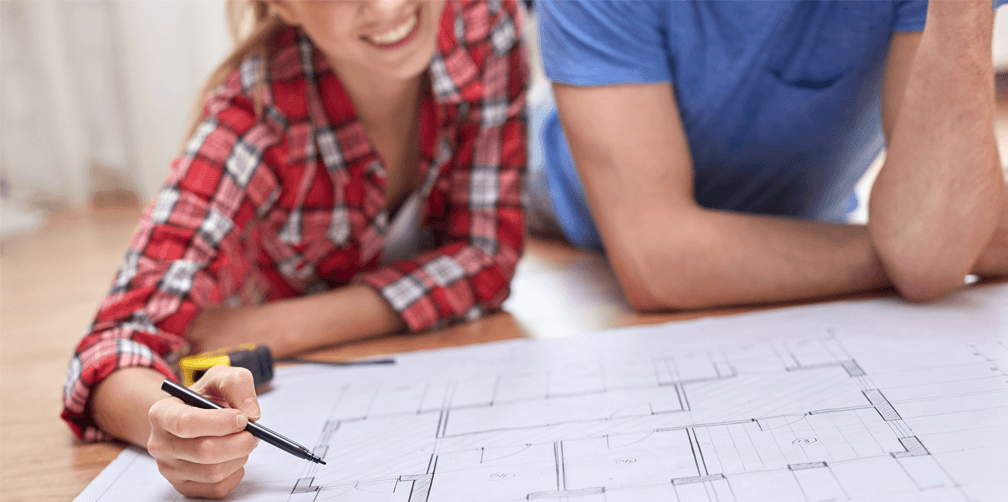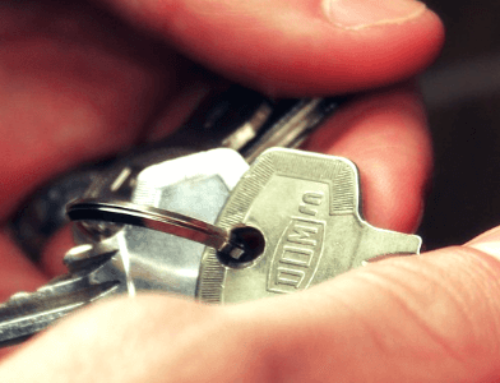Few things could be more satisfying than building your own home. Think about it… it all starts with a vision of the perfect dream house, one that you might have been mentally refining since you were young. A turret here, marble floors there, and next to the guitar-shaped swimming pool, a gigantic courtyard full of aimlessly wandering peacocks…
OK, so your tastes may have developed into something a little more sophisticated since then, but the dream was always there. Now you might be thinking that the time has finally come for you to turn this lifelong dream into a reality, because firstly, it’s human nature to want to create beautiful things, and secondly, it’s a lot easier to live in a real house than a fantasy home.
So, I’m sure you’re aware that with all the joy and excitement that comes with building your own home, comes an equal amount of hard work, stress, and a whole lot of money. Yes, it can be a daunting affair, but by following these 5 simple steps, you should be able to avoid any potential catastrophes, and ultimately have the process run as smoothly as possible. Wouldn’t that be nice? Well, let’s get started then!
1. What can you afford?
First thing’s first, you need to work out your budget. And this doesn’t just mean, how much money do you want to spend on a house? It means, how much can I (and my partner) afford without making existence a financial misery. Of course, you’ll be expected to make sacrifices whilst paying off a mortgage, however, you need to think long and hard about how much you are willing to sacrifice before you take the plunge. If you’re going to spend the next 30 years paying off this house, you’ll want to be realistic about what kind of lifestyle you’re willing to lead that won’t drive you to the brink of insanity.
With that being said, here are the main things you’ll need to take into account when putting together your budget:
- Construction quote + unexpected costs incl. (Zoning / building codes / soil condition / drainage, etc.)
- Housing taxes
- Home insurance
- Furnishings
- Landscaping
- Utility costs (will your new home incur higher living costs?)
It’s important to keep all the necessary costs in mind, but it’s just as important to budget for the unexpected because life always has a way of surprising us – and not always in the nicest way.
2. Land, land everywhere – but where’s the spot for you?
 Finding the land you build upon will more than likely be the main factor that determines how much your house will be worth in the future, and thereby how much you can stand to profit from its value. At this point, I would urge you to do some research, read the statistics, and listen to what the housing experts have to say. You might think you have the perfect place in mind, but do you know if it has future infrastructure plans if it’s becoming popular with the younger generations, or it’s projected worth in the next 5 years? That might sound a little drastic or over the top, but you’re going to want to build in an area that has a high potential for growth because no matter how beautiful your house turns out if it’s not in an area of high demand, it will ultimately be of little value.
Finding the land you build upon will more than likely be the main factor that determines how much your house will be worth in the future, and thereby how much you can stand to profit from its value. At this point, I would urge you to do some research, read the statistics, and listen to what the housing experts have to say. You might think you have the perfect place in mind, but do you know if it has future infrastructure plans if it’s becoming popular with the younger generations, or it’s projected worth in the next 5 years? That might sound a little drastic or over the top, but you’re going to want to build in an area that has a high potential for growth because no matter how beautiful your house turns out if it’s not in an area of high demand, it will ultimately be of little value.
What you’ll need to factor in when deciding on land to buy:
- The suburb of choice (up and coming / in high demand / affordable, etc.)
- Size of the block
- The cost per square metre
- The future facade of the property
- Potential for ROI
- Quality of the soil
That last one is especially important and will require you to get a soil test done before you commit. It might seem like a hassle, but if you go ahead and purchase the land without having a test done, you might end having to fork out an extra $50,000 compensating for weak soil that can’t support a standard structural foundation.
It’s also going to be worth deciding on whether you plan to design your dream home to fit into your chosen land, or whether you’d prefer to find the right land to accommodate your dream home. There’s a lot to consider when looking for the right land but don’t be put off because it’s one of the most exciting parts!
3. Time to Design
Whether you decide to use a pre-designed plan or a fully customised plan is going to depend on how hands-on you want to be for this next process. Some of you might find this to be the most exciting part, designing every facet of your new home, every light fitting, every wall colour, and every door frame. If that sounds like your idea of heaven then this is your time to shine, and you’ll want to go through every detail of the plan, always keeping future living arrangements in mind.
But, If this just sounds like too much work for you then you might be better suited to finding a stock standard pre-planned design that your builder simply tweaks here and there. This plan is basically as good as finished and now just needs to be built

Whatever method you decide to go for, it’s always wise to get a second opinion from a third party, as this will ensure that you get the best possible price for your upcoming housing costs based on the plan you’ve decided on.
What are those projected costs you might ask? Well, if we’re to assume an average cost of $1,000 per 1 sqm, then you’ll want to determine just how much space you really need to live happily and come up with an overall price. Lastly, It’s going to be better to have a lower projected cost than a higher one, just in case the unexpected happens and you’re forced to make up for extra unplanned expenditures.
4. Build your team supreme
Now’s the time to get the ball rolling. I know you’re excited, but all the enthusiasm in the world
won’t be enough to put your dream home together – you’re going to need an outstanding team of
experts and you get to pick them! These are the main individuals to set your sights on when
choosing your team:
- Builder
- Surveyor
- Excavator
- Conveyancer
- Architect (optional)
If again, this all sounds like more work that you’d prefer to avoid, there are a number of builders who
will be happy to put together this dream team for you. The downside is that you don’t have as
much control over who’s in charge of what, the upside being this will save you a whole bunch of time.
5. Sign on the line
This is it. The final act that stands between you and your dream abode. The contract. What exactly does this entail though? A building contract is going to include detailed descriptions of the property construction and its specifications – simply meaning a comprehensive list of all the parts that will be included within its construction. These specifications are something that you’re going to want to negotiate with the builder before the contract has been written up, otherwise, things could get messy.
You’ll also want to ensure that any changes made to the housing plan or construction process along the way are also amended accordingly in the contract so no one gets duped. Basically, at the end of the day, this contract is going to provide both you and the builder with legal protection from any disagreements or unforeseen circumstances that may arise and cause havoc if it weren’t for this helpful little document.
Well, I believe that’s about it. Now you know the core fundamentals involved in making your dream a reality and I’m assuming that not a darn thing is going to stop you from realising it. Even I’m excited for you.







Leave A Comment